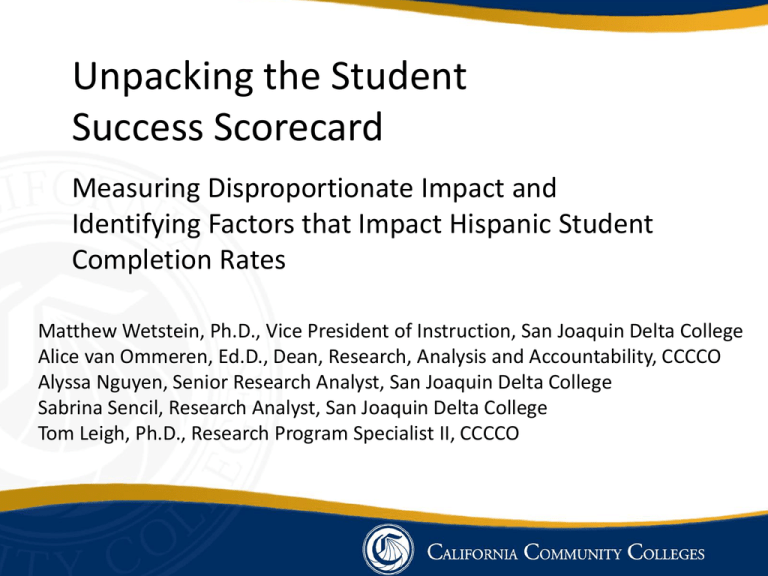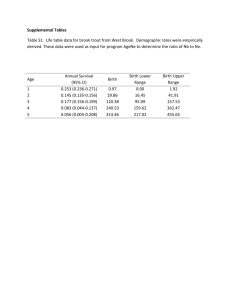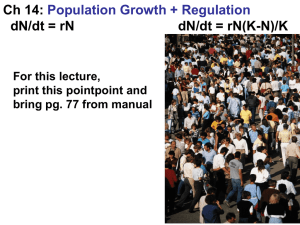Fall 2012 - The RP Group
advertisement

Unpacking the Student Success Scorecard Measuring Disproportionate Impact and Identifying Factors that Impact Hispanic Student Completion Rates Matthew Wetstein, Ph.D., Vice President of Instruction, San Joaquin Delta College Alice van Ommeren, Ed.D., Dean, Research, Analysis and Accountability, CCCCO Alyssa Nguyen, Senior Research Analyst, San Joaquin Delta College Sabrina Sencil, Research Analyst, San Joaquin Delta College Tom Leigh, Ph.D., Research Program Specialist II, CCCCO Background • Increasing attention to reducing the achievement gap (outcomes) • Policymakers and administrators are inquiring about the racial disparities • Researchers are being tasked to measure and explain inequities and disparities • Hispanic enrollment is increasing, but a persistent completion gap exits. Caution Racial categories are constructs and do not capture social, cultural, economic and political issues surrounding racial diversity. Differences in outcomes are due to underlying social, cultural, economic issues associated with race/ethnicity. Measuring Disproportionate Impact • Existing Legislation or Policy – Title 5, Section 55512(a) • Assessment process and its impact • Terms of ethnicity, gender, age or disability – Student Success Task Force • Recommendation to disaggregate • Demographics, including race/ethnicity – Title 5, Section 54220 • Student Equity Plans • Revised and due in Fall 2014 2013 Scorecard Completion COHORT 2013 Scorecard 2006-07 Cohort OUTCOME Attained Completion Outcome Completion Percentage of degree and/or transfer-seeking students tracked for six years through 2011-12 who completed a degree, certificate or transfer related outcomes. Measuring Disproportionate Impact Two Methods: • 80-Percent Rule • Proportionality Index The 80 Percent Rule The 80 Percent Rule methodology is based on the Equal Employment Opportunity Commission (EEOC) 80% Rule, outlined in the 1978 Uniform Guidelines on Employee Selection Procedures, and was used in Title VII enforcement by the U.S. Equal Opportunity Commission, Department of Labor, and the Department of Justice. The 80 Percent Rule (cont’d) The 80% Rule states that: “A selection rate for any race, sex, or ethnic group which is less than fourfifths (4/5) (or eighty percent) of the rate for the group with the highest rate will generally be regarded by the Federal enforcement agencies as evidence of adverse impact, while a greater than four-fifths rate will generally not be regarded by Federal enforcement agencies as evidence of adverse impact.” Calculating the 80 Percent Ratio Three Steps: 1. Calculate the frequency and percent of disaggregated subgroups in cohort and outcome groups. 2. Calculate the percent attainment of each subgroup. Divide the outcome count by the cohort count. 3. Divide the percent attainment of each subgroup by the percent attainment of a reference group to obtain the 80 Percent Ratio. Step One. Calculate the frequency and percent of disaggregated subgroups in cohort and outcome groups. Race/Ethnicity African American American Indian 2013 Scorecard Cohort Count Percent 12,923 7.3 Completion Outcome Count Percent 5,044 5.8 1,565 0.9 603 0.7 Asian 28,800 16.2 18,035 20.7 Hispanic 56,703 32.0 22,425 25.7 1,688 1.0 690 0.8 Unknown 15,260 8.6 8,084 9.3 White 60,523 34.1 32,386 37.1 Pacific Islander Step Two. Calculate the percent attainment of each group. Divide the outcome count by the cohort count. Race/Ethnicity 2013 Scorecard Cohort Count Percent Completion Outcome Count Percent Percent Completion African American 12,923 7.3 5,044 5.8 39.0 American Indian 1,565 0.9 603 0.7 38.5 Asian 28,800 16.2 18,035 20.7 62.6 Hispanic 56,703 32.0 22,425 25.7 39.5 1,688 1.0 690 0.8 40.9 Unknown 15,260 8.6 8,084 9.3 53.0 White 60,523 34.1 32,386 37.1 53.5 Pacific Islander Step Three. Divide the percent attainment of each subgroup by the percent attainment of a reference group to obtain an 80 Percent Ratio. How to pick the reference group? • Original EEOC legislation mandated the highestperforming group. • CCCCO suggests the largest subgroup as the reference group. or • When there is not a clear majority or the majority percentage may not be the best choice (e.g., the percent of the largest majority is less than the overall rate) one can use the overall rate as the reference. Step Three. Divide the percent attainment of each subgroup by the percent attainment of a reference group to obtain an 80 Percent Ratio. Race/Ethnicity 2013 Scorecard Cohort Count Percent Completion Outcome Count Percent Percent Completion 80-Percent Ratio African American 12,923 7.3 5,044 5.8 39.0 72.9 American Indian 1,565 0.9 603 0.7 38.5 72.0 Asian 28,800 16.2 18,035 20.7 62.6 117.0 Hispanic 56,703 32.0 22,425 25.7 39.5 73.9 1,688 1.0 690 0.8 40.9 76.4 Unknown 15,260 8.6 8,084 9.3 53.0 99.0 White 60,523 34.1 32,386 37.1 53.5 100.0 Pacific Islander Proportionality Divide the percentage of each race/ethnicity in the outcome group by its percent in the cohort. Interpreting the Proportionality Index Proportionality Index Interpretation Proportions of subgroups in cohort and 1.0 outcome are equal. Subgroup is less prevalent in the outcome Less Than 1.0 group than the cohort. Subgroup is more prevalent in the outcome More Than 1.0 group than the cohort. Proportionality: Divide the percentage of each race/ethnicity in the outcome group by its percent in the cohort. Race/Ethnicity African American American Indian 2013 Scorecard Cohort Count Percent 12,923 7.28 Completion Outcome Proportionality Count Percent 5,044 5.78 0.79 1,565 0.88 603 0.69 0.78 Asian 28,800 16.23 18,035 20.67 1.27 Hispanic 56,703 31.95 22,425 25.7 0.80 1,688 0.95 690 0.79 0.83 Unknown 15,260 8.6 8,084 9.26 1.08 White 60,523 34.1 32,386 37.11 1.09 Pacific Islander Hispanic 2013 Scorecard Completion Rate Proportionality by College Summary Statistics Mean Median Minimum Maximum Range 0.86 0.85 0.64 1.28 0.64 Parent Education Level by Race-Ethnicity* N = 31,376 All 44.2 Grade Nine Or Less 87.4 Grades 10,11,or 12 But Did Not Graduate 74.2 African American American Indian High School Graduate 48.7 Some College No Degree Asian Hispanic 41.7 Pacific Islander Associate Degree Multi-Race 35.4 White Baccalaureate Degree 19.6 Graduate or Professional Degree 20.5 0% 20% 40% 60% 80% *First-Time Students Fall 2012 with valid Parent Education value. 100%





